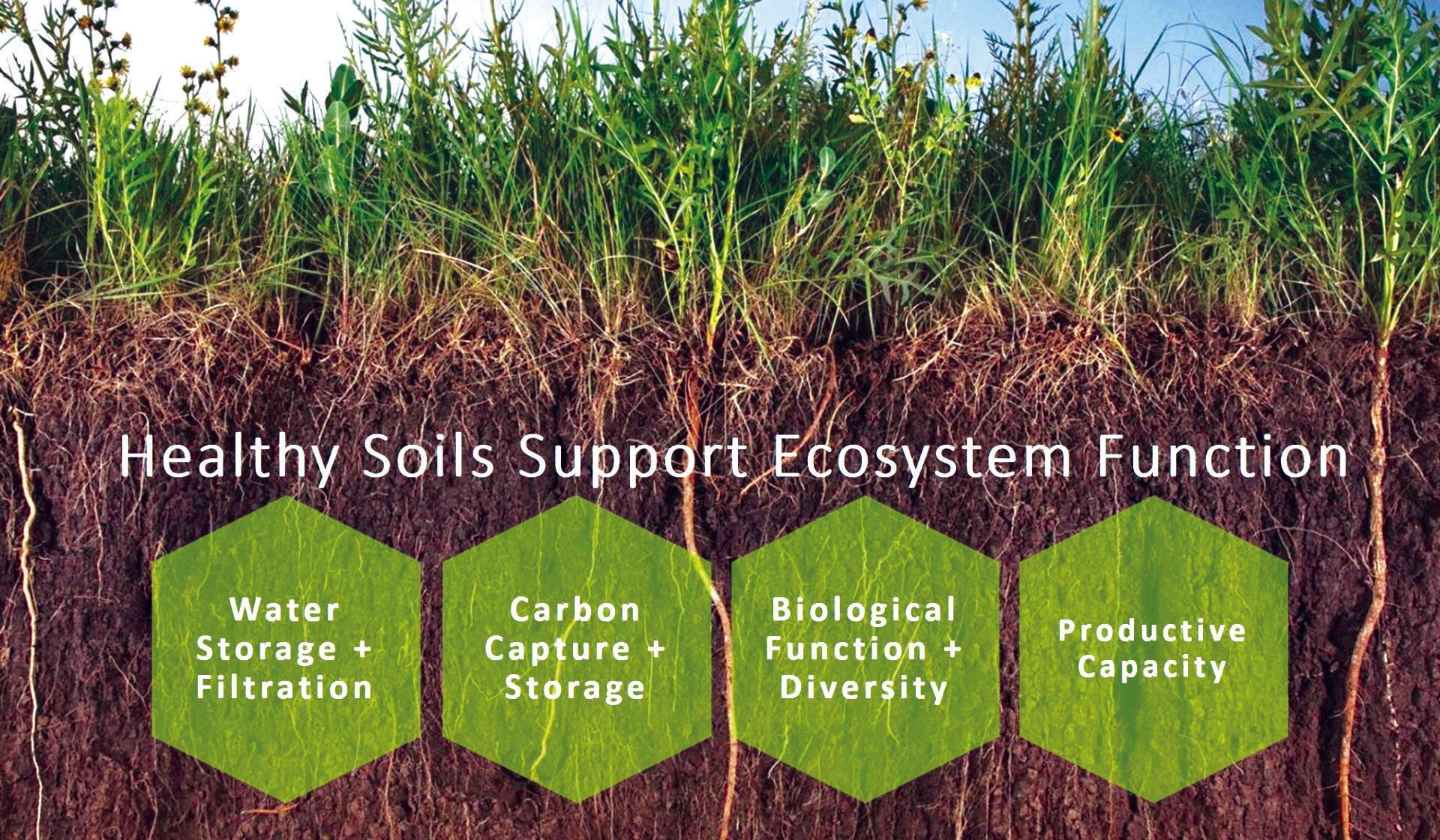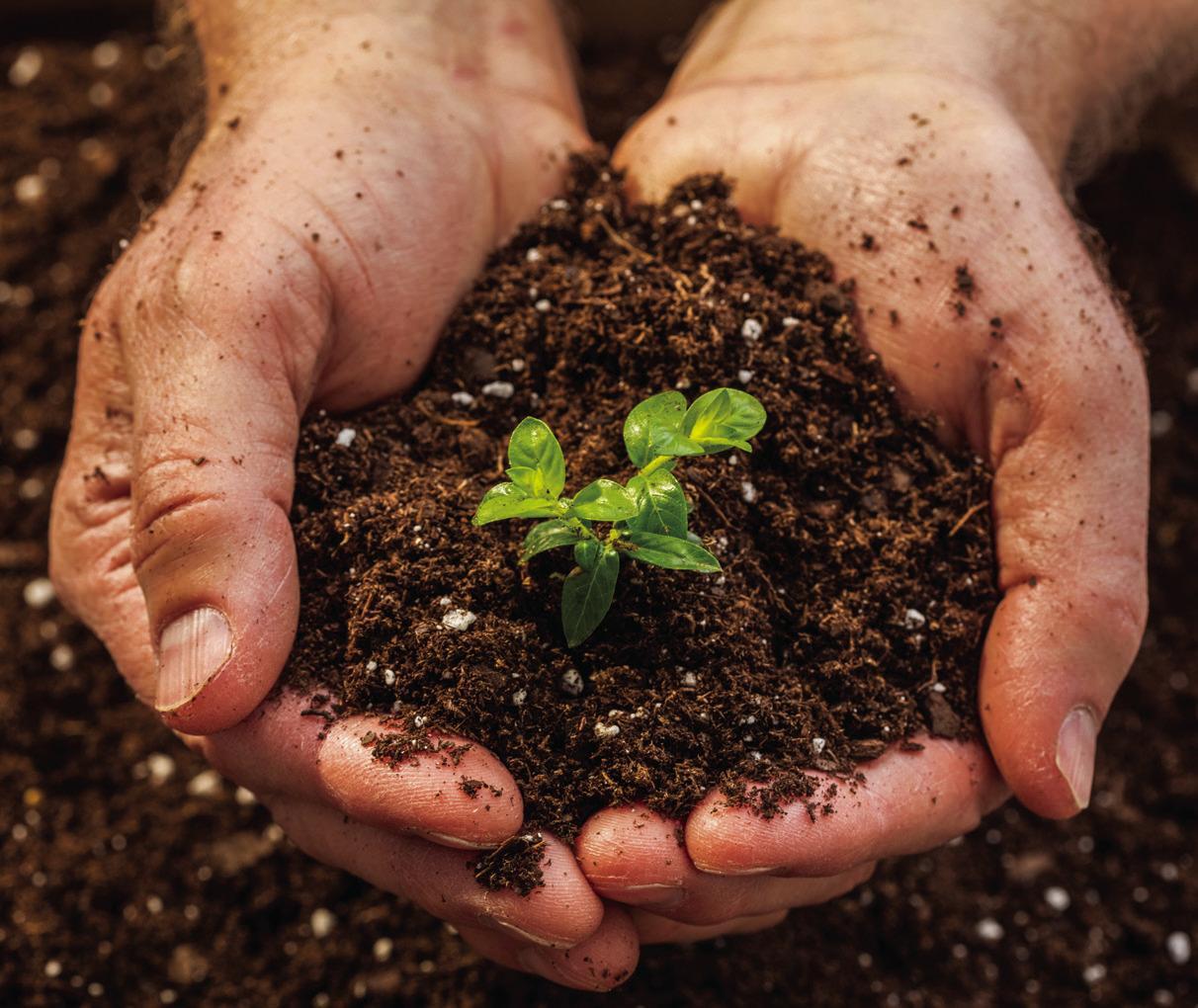
Soil chart from ecolandscaping.org

Photo from Metro Creative
Building healthy soil
In our health-conscious society, an under-appreciated fact is that health actually begins in the soil, the source and destination of all physical life forms, the great cycler of nutrients.
Modern techniques promise bumper harvests, but the nutritional density and nurturing capacity of that food will depend on what’s in the soil. Malnourished soil will only result in malnutrition.
Soil and life have evolved together. Harm one and you jeopardize the other. How can we peacefully coexist with soil, building it while it builds us?
Protecting the living marvel
Soil building begins with understanding followed by results. Composed of about 45% mineral (sand, silt, clay), 25% air, 25% water and 5% organic matter, soil derives its magical, life-sustaining ability from the very diverse life that already exists in it. A teaspoon of healthy garden soil teems with life, including a billion bacteria, fungal filaments, protozoa and nematodes. One study identified 10,000 different living species, each creating an intricate web of symbiotic associations and synergy that is far greater than the sum of its parts.
Just as our skin is a protective barrier, soil does best when its living ecosystem is shielded by a protective armor, irrespective of season. Ensuring the soil is never left bare — whether by mulching with bark, leaves, pine needles or by growing a green cover — protects it from erosion by the elements. The organic layer helps moderate soil temperature, prevents compaction, minimizes water loss through evaporation and suppresses weed growth while provid-ing a habitat to innumerable life-forms that call it home. This strategy is much preferred to using plastic ground cover which suffocates the soil and disintegrates into micro-plastics that poison the environment.
It takes centuries to make an inch of topsoil and many more for it to be fertile. For soil to be healthy, well-aggregated and productive over the long term, it’s imperative we safeguard it by minimizing disturbance. Counterintuitive perhaps, but overtilling actually accelerates soil compaction and erosion. Applying compost to your garden is the preferred method to avoid compaction as it increases the air, water and nutrients in your soil.
Before applying any fertilizer, consider soil testing. The test only costs about $12 and will provide accurate recommendations for your growing needs. Also avoid using pesticides and know that 95% of all insects are either beneficial or neutral to humans.
Over-application of fertilizer and pesticide disrupts soil’s delicate equilibrium. Run-offs wreak havoc on our waterways and marine life.
Promoting Biodiversity
Our soils evolved in a perennial landscape where plant and animal diversity flourished. Across seasons, different plants harvested carbon dioxide and sunshine and returned carbon exudates further nourishing the soil. Grazing animals converted high-carbon crop residue to low-carbon organic material, maintaining soil’s carbon-nitrogen equilibrium.
With the advent of modern agriculture, the shift towards monoculture replaced most of this. Soil, the giant carbon storehouse, now receives a minuscule portion of what it once did. Much of the carbon is left in the atmosphere to add to the planet’s woes.
To build soil, we must once more embrace diversity in what we grow and allow diversity to take root in the land we steward.
Soil with a variety of native root systems — deep, shallow, fibrous, tap and a healthy mix of grasses and broad leaf plants — is held together in place in a more effective manner, and rainfall infiltration and nutrient cycling are improved. Such landscapes provide a pollinator habitat and result in fewer diseases and pests compared to monocultures. Rotating what we grow helps the soil to recover naturally.
The value of soil
Living soil is the secret of a thriving garden. Mounting scientific evidence provides validity to the heightened levels of overall wellbeing, immunity, stress resistance, natural anti-depressants and a richer microbiota experienced by those out in nature working with soil.
Let’s treat this precious resource with the reverence and care it truly deserves.











